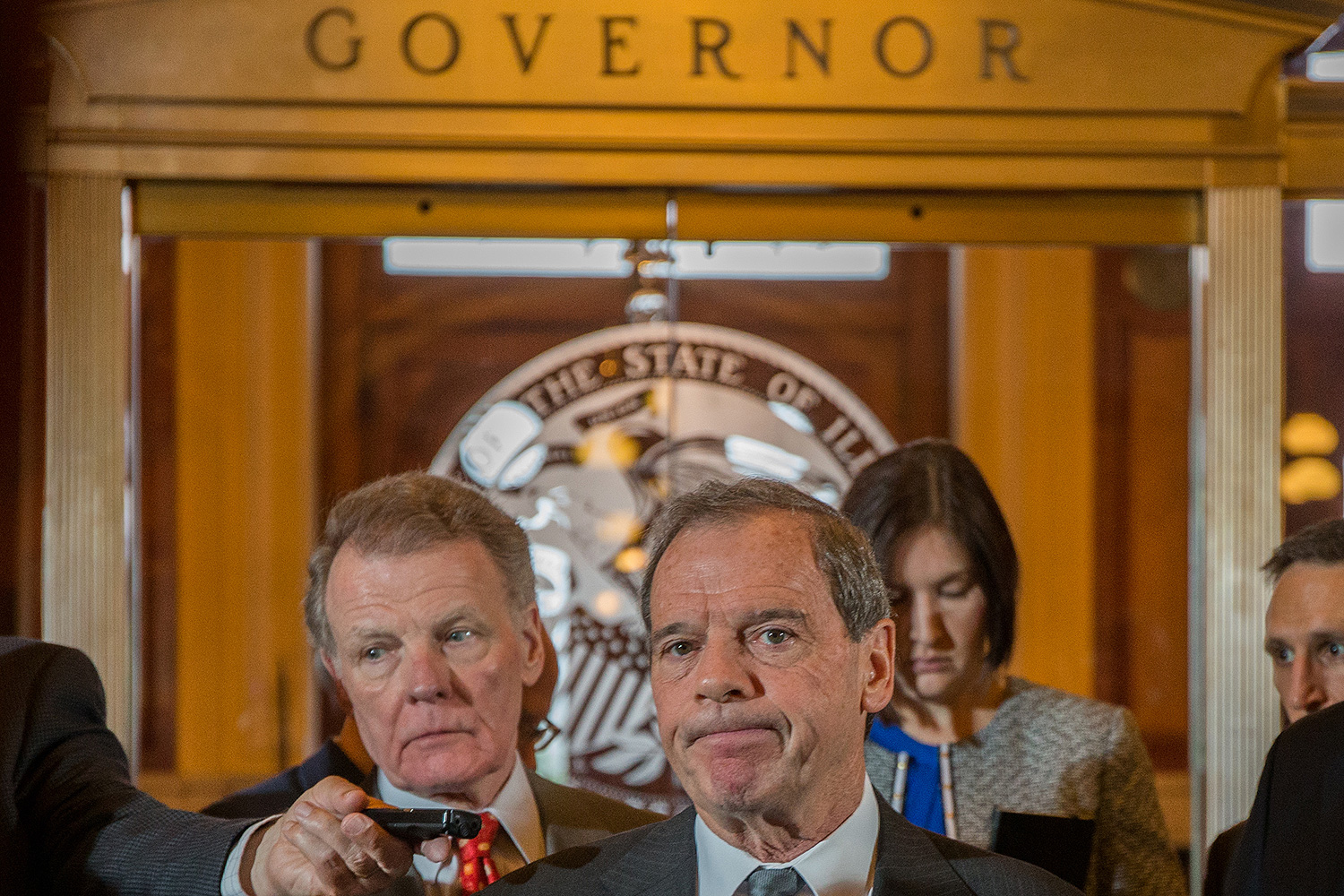It appears Illinois will get a stopgap budget, getting the state through the next six months without shutting down schools or basic government services. There are additions, like $250 million for low-income school districts, and legislation that allows Chicago, at no cost to the state, to raise property taxes and seek federal money through transit-oriented tax-increment financing. K-12 funding is set for all of fiscal year 2017, and higher education is funded through the first half of FY 2017; Rich Miller has a good roundup of the details.
But for the most part, it's a way for the state to maintain our uneasy condition until the legislature and governor get through the November elections.
What then?
Even as the stopgap budget was debated, both sides of the aisle exchanged recriminations about the other's inability to propose a "balanced" budget. Neither could; the Democrats' proposed budget was explicitly unbalanced and thus vetoed by Rauner, and in response the governor proposed the Unbalanced Budget Response Act, which was… also unbalanced, with vague and/or unrealistic plans to close the gap.
If this seems futile, it's because it's all but futile, given the state's fiscal situation.
"If you use the definition that I'm using [for a balanced budget], you have to have enough income coming in to support the liabilities that you're incurring. The only way to do that would either be massive cuts in spending, probably on the order of six or eight billion dollars, or massive increases in revenue," says David Merriman of UIC's Department of Public Administration. "As near as I can tell, what I'm hearing from Springfield, no one's talking about revenue. And it doesn't appear that anyone is talking about spending cuts anywhere near that substantial."
The budget could be balanced through borrowing, at least in terms of the constitutional requirement for a balanced budget. But the state's debt is already substantial, and debt payments are a major piece of the state's expenses. In fiscal year 2015—the last in which the state had a budget—$11 billion of the state's expenditures were hard costs, which include debt and pension payments. (Debt payments alone were about $4 billion in 2015.)
That left about $24 billion for… pretty much all state services in 2015.
According to Ralph Martire, director of the Center for Tax and Budget Accountability, the state can count on about $31 billion in revenue in 2016, which puts it about $4 billion in the hole compared to 2015 expenditures. But the state also came into 2016 with about $6 billion in unpaid bills, and is dealing with a $600 million increase in pension payments. So, to maintain the level of past services, the state needs $11 billion in borrowing, new revenues—or cuts. (The state's most recent projections for fiscal year 2017 are even more dire, a $5.6 billion deficit with a $14.6 billion backlog in bills at the end of that fiscal year.)
"Which means [if you rely on cuts], out of $24 billion in spending on current services, you have to cut almost half," Martire says. "So to get to a balanced budget with our current revenue, we would have to cut spending on education, health, social services, and public services, by 48 percent. You think that'd be a good idea?"
We're already getting a preview of that. As my colleague Bettina Chang reported, over one million state residents, about eight percent of everyone in the state, have lost "critical services" due to the impasse just from its impact on social-safety spending. It's hard to imagine those would not be permanent cuts if billions have to come out of the budget, given that health care ($8.3 billion) and human services ($5 billion) are two of the three biggest projected expenditures in 2017, along with all education, from K-12 through college ($8.3 billion). Public safety is just $1.6 billion; government services just $2.9 billion.
Martire suggests raising taxes before the tab gets worse.
"We would have to bump up our income-tax rate from its current level of 3.75 percent to somewhere between 5 and 5.5 percent. By the way, we could have gotten away with 4.75 percent if they'd increased taxes last year," Martire says. "So every month they wait, it gets more expensive to solve the problem, and worse for taxpayers."
He also proposes expanding the sales tax base to include more consumer services, something the governor has floated (the list of services the state taxes is one of the shortest in the country), taxing retirement income (out of 41 states with an income tax, 38 do this), and refinancing the state's pension debt while extending the period required to full funding. There's a good discussion of that last idea on this post at Capitol Fax and in the comments section. As Rich Miller puts it, "it's like refinancing a mortgage that had been stupidly rigged with expensive balloon payments."
The alternative is repeating this process year after year.
"When you just adjust for inflation and changes in population, even during normal economic times, the growth in tax revenue won't be enough in Illinois to maintain the same level of services from one fiscal year to the next," Martire says. "Even if no service is ever added or expanded, we will run deficits if we just try to maintain services."



